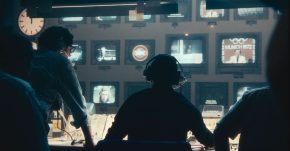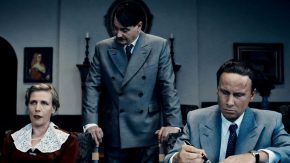Visitors to the Budapest Spring Festival will have the chance to indulge in a world premiere: the Concerto Budapest will play Leoncavallo’s Requiem, never before performed with a symphony orchestra, at the Budapest Vigadó. The reconstruction of the work spanned ten years, and was carried out by József Ács, the pianist and composer of Hungarian origin. At the Budapest concert, the piece will be conducted by his brother, Janos Acs, who resides in Italy, and whom the audience may be familiar with, not least as the conductor of the Three Tenors concert series.
You’ve lived in Italy for decades. What role has Italian music and Leoncavallo played in your career?
I grew up in a family that loved and understood music. My father was a cantor-schoolteacher, and my older brother was a child prodigy, whom Bence Szabolcsi called “the Hungarian Mozart”; he was admitted to the Music Academy at the age of 13, to the school for exceptional talents founded by Kodály. Unfortunately, life circumstances compelled us to leave Hungary in the 1970s. My brother became a pianist, organist, and composer. In Milan, I completed my university studies in singing, organ, and composition. As a child, I’d wanted to be a singer. Between the ages of 7 and 14, I sang in the children’s choir of the opera house, and, as a choir member, I heard the greatest singers of our time, from Piero Cappuccilli to Renata Scotto, as well as the young Domingo. When Mario del Monaco sang in Pagliacci in Budapest, I was so moved by his performance that this became one of my life’s most adored operas.
Why did you become a conductor in the end?
In Italy, I realized that I would never be a first-rate singer. Since I wished to remain working in this field at any cost, I became a répétiteur. Then, I happened to win a répétiteur competition, the first prize of which was the chance to conduct one of Donizetti’s early operas. This assignment turned out so well that it launched my career, but I carried on working as a pianist in places like La Scala, La Fenice, and opera houses in Rome, Florence, and Genoa. I had the chance to meet the greatest conductors of the time, from Abbado to Carlo Maria Giulini, and Peter Maag, whose assistant I became.
How did you come into contact with Pavarotti?
As on so many other occasions in my life, Providence once again smiled upon me. Pavarotti’s first wife, Adua Veroni, with whom I’m still friends with today, was an artists’ agent. But she would only take on people who had first been heard by her husband. Luciano came to see a performance where I was conducting Mascagni’s opera, L’amico Fritz, at the Pesaro Summer Festival. After act one, he summoned me and asked in amazement how somebody with a Hungarian name could have such an Italian temperament and skill in phrasing. After a few occasions where I played piano accompaniment for him, he suggested I conduct our first joint orchestral concert; I ended up conducting over seventy of his concerts all over the world. Not many people know that the idea for the Three Tenors concert series came from Hollywood-based Tibor Rudas, Frank Sinatra’s manager. He was the first to take such a show – and Pavarotti too – into a stadium, and the arenas were immediately sold out. After recovering from his illness, José Carreras would no longer perform in opera houses, but was willing to do concerts. That’s when these three marvellous people, Pavarotti, Domingo, and Rudas, came along, and thought up the concert series in order to prolong the life and career of this exceptional artist. The plan worked so well that Carreras outlived Luciano, and to this day he gives splendid concerts.
When did you first come across Leoncavallo’s Requiem?
The reconstruction – both of the chamber and the orchestral versions – is the work of my brother. My role in this was that I knew Leoncavallo’s opera Zazà, which wasn’t one of his more successful works, but contains quite a few exceptional parts. I took it to my brother, who looked through it and began researching. Leoncavallo was born in Naples and buried in a small Swiss village called Brissago on the shores of Lago Maggiore. That is where my brother found the, albeit fragmentary, manuscript of the Requiem, but passages were extant from every movement of the work. Later, searching through material for the composer’s other operas, Zazà and Edipo re, he found those missing parts that fit perfectly into the manuscript. In his operas, Leoncavallo used sections of the musical material, which, for reasons unknown, remained incomplete as an independent work. He was originally commissioned for the work in 1900, after the Italian King Umberto had been assassinated in Monza. Leoncavallo seemed a logical choice, because by then he was an extremely renowned composer of the age; Verdi was elderly and had already composed a requiem, so they couldn’t ask him for another.
How did the version we’ll hear at the Budapest Vigadó come to be?
The orchestral score exists thanks to the brilliance of my brother, and is the result of ten years of work. At the same time, I’d like to emphasize that every note in this version belongs to Leoncavallo! In Brissago, only the chamber version has been played, so the performance in Budapest will be a world premiere. The work was originally written not for a symphony orchestra, but for cello, double bass, and clarinet, in addition to the choir and three soloists. One reason is clearly that Italian composers admired and respected Verdi so much that no one dared attempt a similar work after him. But the drama of Leoncavallo’s piece cries out for a symphony orchestra version.
Saved from Oblivion – from Mozart to Bartók
The most famous unfinished work in music history is Mozart’s Requiem, which has several reconstructed versions, the most famous being the work of Franz Xaver Süssmayr. Johann Sebastian Bach’s son, Carl Philipp Emanuel, inserted an annotation above the unfinished fugue in his father’s The Art of Fugue, explaining that the composer had died while writing it. Several musicians have written conclusions to this piece too, including the Hungarian Zoltán Göncz. Puccini’s Turandot should also be included in the list: the completion of the opera was cut short by the death of Leoncavallo’s contemporary, and the composer Franco Alfano provided the ending in 1926; this was the only version in existence until the premiere of Luciano Berio’s new version in 2002. Béla Bartók’s Viola Concerto was completed by one of his pupils, Tibor Serly, and he also supplemented the orchestration of the last 17 bars of the Piano Concerto No.3.
After the world premiere, will you play the work anywhere else?
On 5 September, on the twelfth anniversary of Pavarotti’s death, we will present the work at the Luciano Pavarotti Municipal Theatre in Modena. Until then, I’ll be preparing for the Budapest concert, because the Concerto Budapest is a wonderful ensemble, and I’ll be working with them for the first time. But the most important thing is to make my brother happy, so he can hear the piece, the result of his work. We are both convinced that the Requiem should have a place among the greatest works in music history.
Author: Leonóra Mörk
This article was first published in the BSF Magazine.
April 17 | 7.30 pm
Pesti Vigadó – Ceremonial Hall
Janos Acs and the Concerto Budapest
Featuring: Eszter Sümegi, Attila Fekete, Zsolt Haja – voice, Gábor Homoki – viola, Jozsef Acs – organ, Hungarian National Choir (choirmaster: Csaba Somos)



























Comments